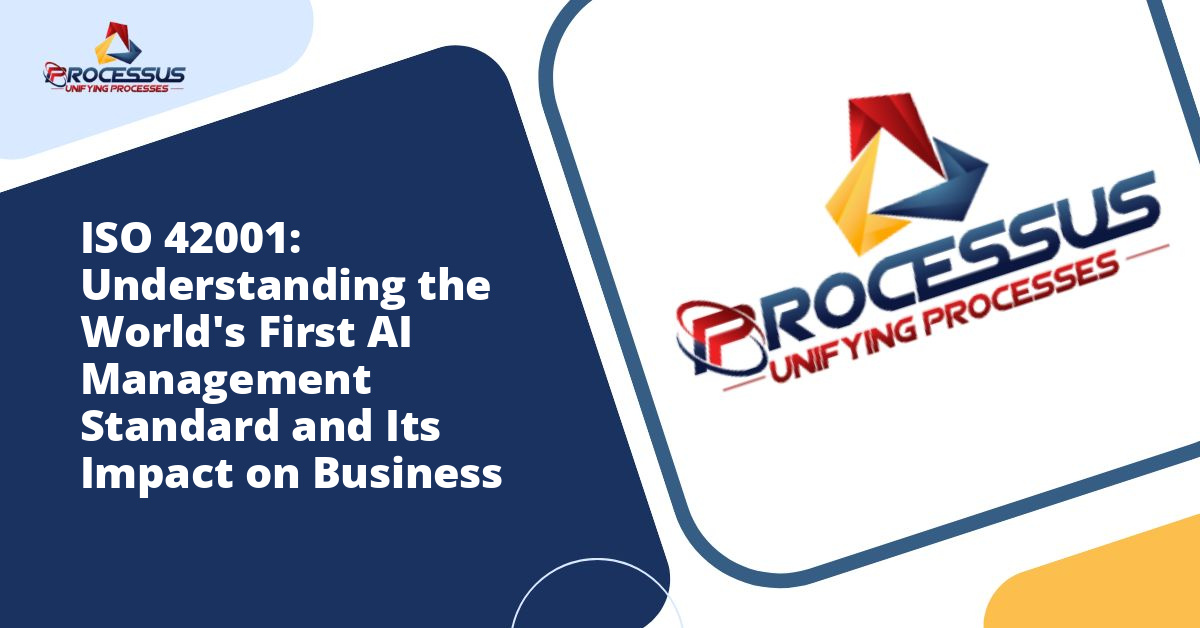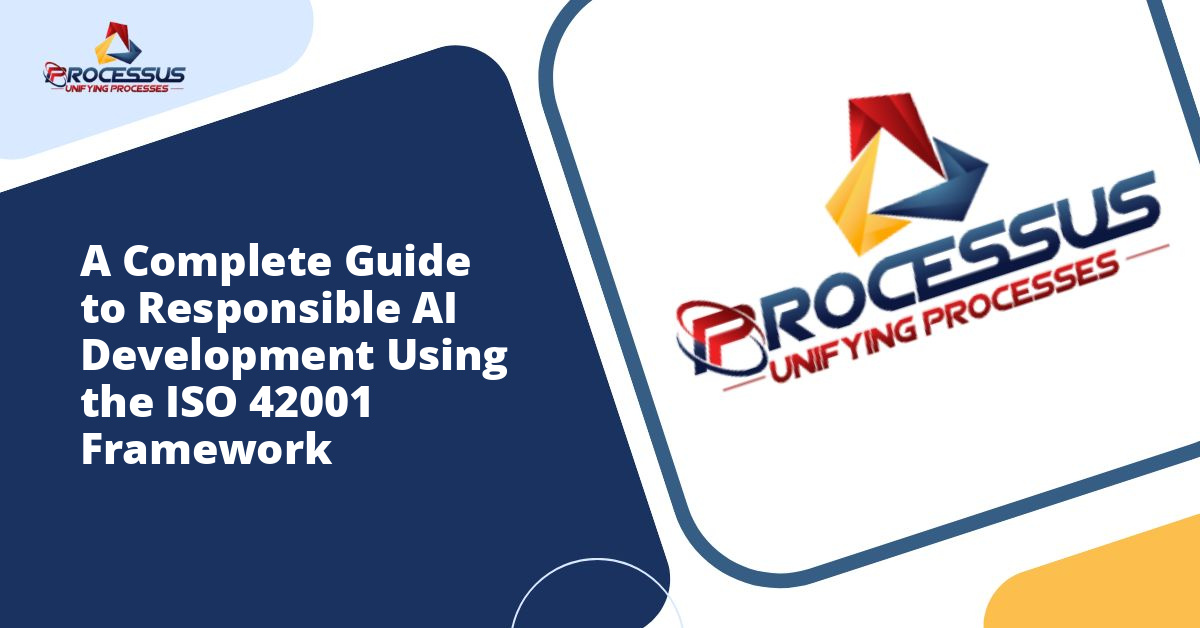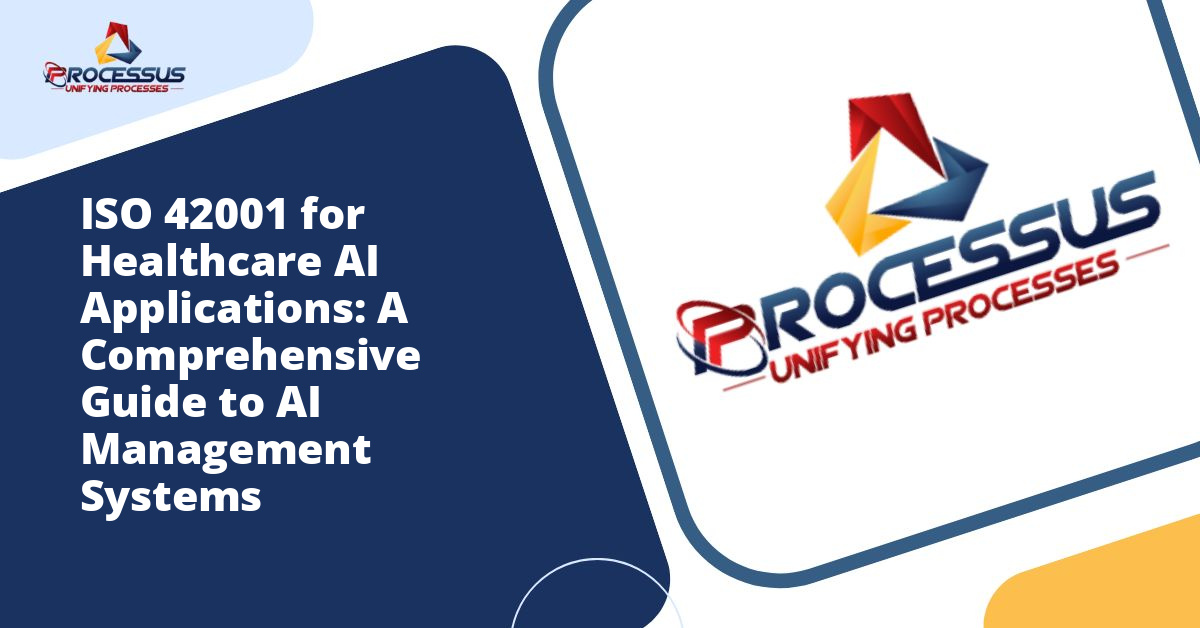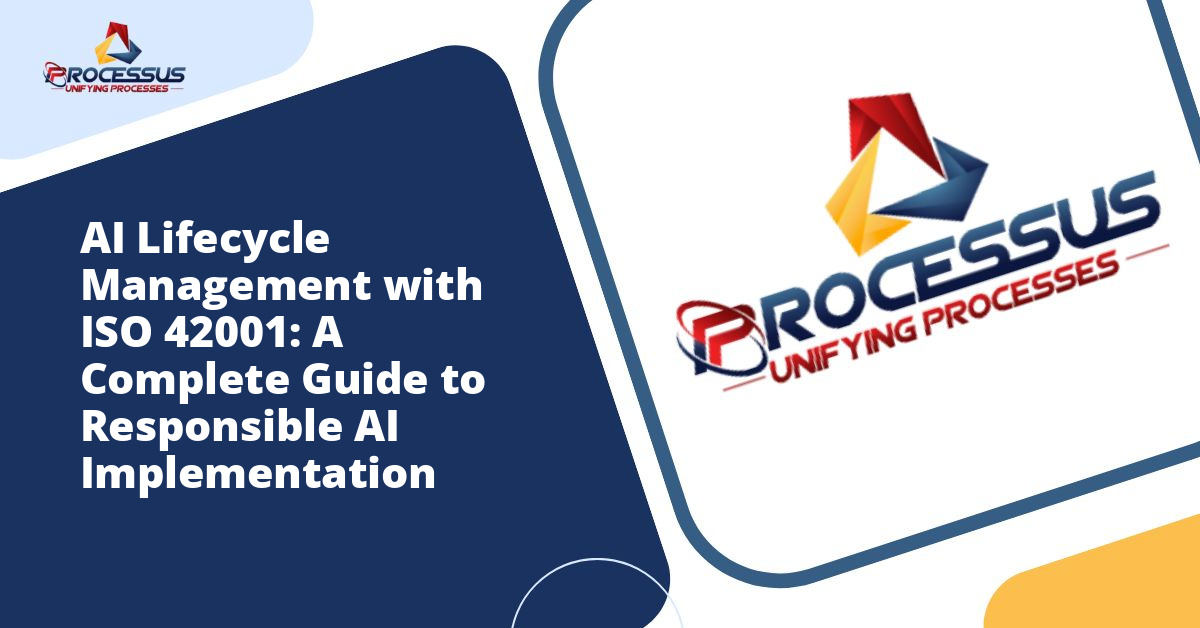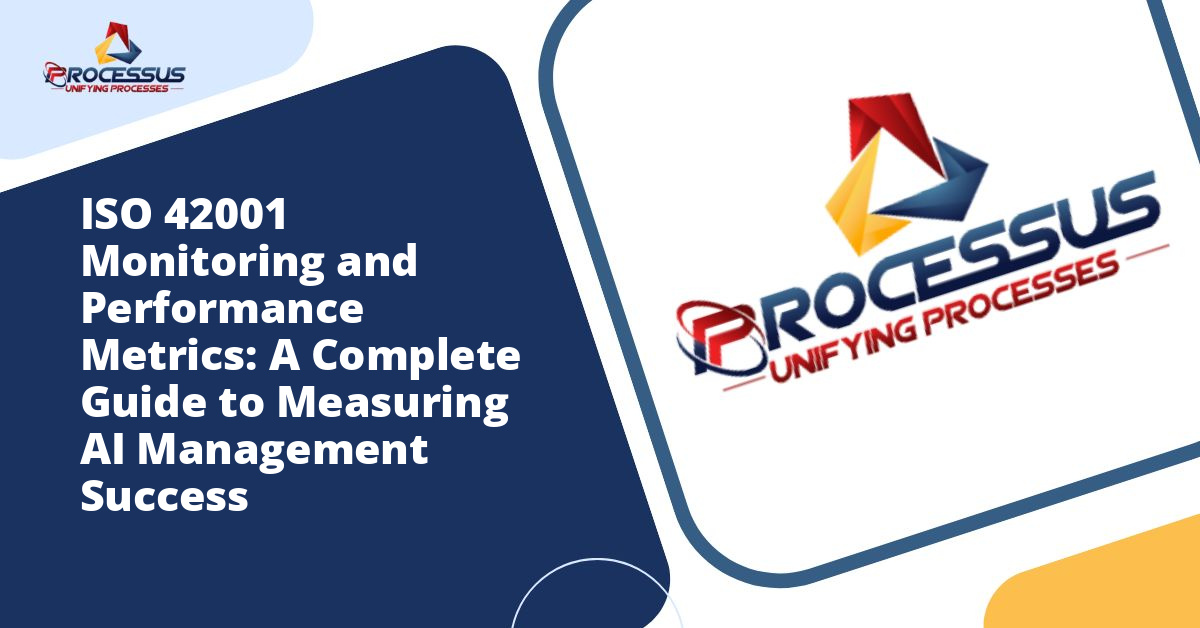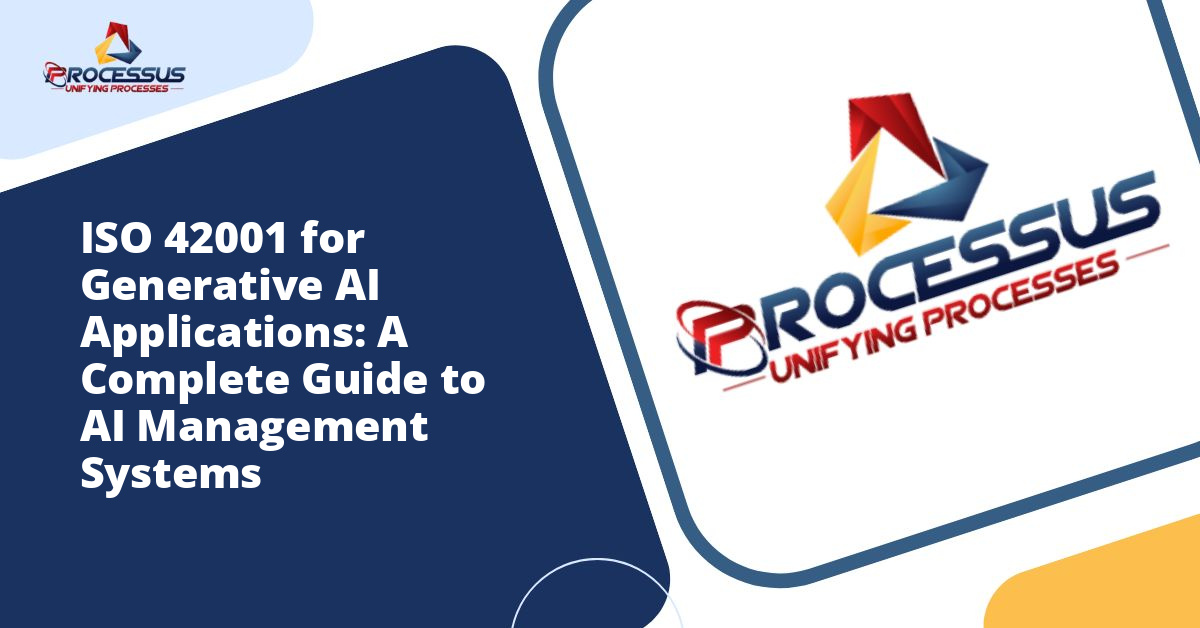The rapid advancement of artificial intelligence has transformed how organizations operate, making decisions, and interact with customers. However, this technological revolution has also raised critical questions about accountability, ethics, and risk management. Enter ISO 42001, the world’s first international standard specifically designed to help organizations manage artificial intelligence systems responsibly and effectively.
Released in December 2023, ISO 42001 represents a watershed moment in the governance of AI technologies. This comprehensive standard provides a framework that enables organizations to develop, deploy, and manage AI systems while addressing concerns about safety, transparency, and ethical considerations. As businesses increasingly integrate AI into their operations, understanding this standard becomes essential for maintaining competitive advantage and public trust.
What Is ISO 42001?
ISO 42001 is an international standard that specifies requirements for establishing, implementing, maintaining, and continually improving an Artificial Intelligence Management System (AIMS). Developed by the International Organization for Standardization, this standard provides a structured approach to managing the unique challenges associated with AI systems throughout their lifecycle.
The standard is designed to be applicable to organizations of all sizes and sectors, from small startups experimenting with machine learning to large enterprises deploying complex AI solutions. It recognizes that AI systems differ fundamentally from traditional IT systems, requiring specialized governance mechanisms to address their dynamic nature, potential biases, and wide-ranging societal impacts.
Unlike technical standards that focus on specific AI algorithms or technologies, ISO 42001 takes a management systems approach. This means it concentrates on organizational processes, policies, and controls rather than prescribing specific technical solutions. This flexibility allows organizations to adapt the standard to their specific context while maintaining a consistent framework for responsible AI management.
The Need for an AI Management Standard
The development of ISO 42001 responds to several pressing challenges facing organizations that develop or deploy AI systems. These challenges have become increasingly apparent as AI technologies have moved from experimental applications to mission-critical business functions.
Addressing AI-Specific Risks
Artificial intelligence systems present unique risks that traditional risk management frameworks struggle to address adequately. These include algorithmic bias, data quality issues, model drift, explainability challenges, and unintended consequences of automated decision-making. Organizations need systematic approaches to identify, assess, and mitigate these risks throughout the AI lifecycle.
Meeting Regulatory Expectations
Governments worldwide are introducing regulations governing AI use, from the European Union’s AI Act to various sector-specific requirements in healthcare, finance, and employment. ISO 42001 provides a foundation for demonstrating compliance with these evolving regulatory requirements, helping organizations stay ahead of legal obligations.
Building Stakeholder Trust
Public concern about AI’s impact on privacy, employment, and decision-making fairness has grown substantially. Organizations that can demonstrate responsible AI practices through adherence to recognized standards like ISO 42001 are better positioned to maintain trust with customers, employees, investors, and regulators.
Improving Operational Efficiency
Beyond risk management and compliance, a structured approach to AI management can improve operational efficiency. Clear processes for AI development, deployment, monitoring, and improvement help organizations avoid costly mistakes, reduce rework, and ensure that AI investments deliver expected value.
Key Components of ISO 42001
ISO 42001 is structured around several core components that work together to create a comprehensive AI management system. Understanding these elements is crucial for organizations considering implementation.
Context of the Organization
The standard requires organizations to understand their unique context, including internal and external factors that affect their AI management system. This includes identifying stakeholders and their expectations, understanding the regulatory environment, and recognizing organizational constraints and opportunities. Organizations must define the scope of their AIMS, determining which AI systems, processes, and organizational units will be covered.
Leadership and Commitment
Top management plays a critical role in ISO 42001 implementation. The standard requires leadership to demonstrate commitment by establishing AI policies, assigning responsibilities, and ensuring that AI management objectives align with strategic direction. This top-down approach ensures that AI governance receives adequate resources and attention at the highest organizational levels.
Planning
Organizations must systematically plan their approach to AI management, including risk assessment and treatment, identifying opportunities for improvement, and setting measurable objectives. The planning phase involves understanding the potential impacts of AI systems on individuals, groups, and society, and developing strategies to maximize benefits while minimizing harms.
Support
ISO 42001 emphasizes the importance of providing adequate support for the AI management system. This includes ensuring competent personnel, maintaining appropriate documentation, and establishing effective communication channels. Organizations must ensure that individuals working with AI systems have the necessary skills and knowledge, including understanding of AI-specific risks and ethical considerations.
Operation
The operational requirements of ISO 42001 cover the entire AI system lifecycle, from initial concept through development, deployment, monitoring, and eventual retirement. This includes data management, model development and validation, system integration, ongoing performance monitoring, and procedures for responding when AI systems behave unexpectedly or cause harm.
Performance Evaluation
Organizations must establish processes for monitoring, measuring, analyzing, and evaluating their AI management system’s effectiveness. This includes regular internal audits, management reviews, and assessment of whether AI systems are achieving their intended purposes without causing unacceptable harm. Performance evaluation should consider both technical metrics and broader impacts on stakeholders.
Improvement
The standard requires organizations to continually improve their AI management system by addressing nonconformities, incidents, and opportunities for enhancement. This reflects the dynamic nature of AI technologies and the need for organizations to adapt their management approaches as AI capabilities evolve and new risks emerge.
Specific Controls in ISO 42001
Beyond the management system framework, ISO 42001 includes specific controls addressing particular aspects of AI management. These controls provide detailed guidance on managing AI-specific challenges.
Impact Assessment
Organizations must conduct thorough assessments of how AI systems may affect individuals, groups, society, and the environment. These assessments should consider potential negative impacts such as discrimination, privacy violations, or safety risks, as well as positive contributions. Impact assessments should inform decisions about whether to proceed with AI initiatives and what safeguards to implement.
Data Management
Given that data quality directly affects AI system performance and fairness, ISO 42001 includes controls for data governance throughout the AI lifecycle. This covers data collection, labeling, storage, processing, and disposal, with attention to data quality, representativeness, privacy, and security. Organizations must ensure that training data does not perpetuate biases or lead to discriminatory outcomes.
Transparency and Explainability
The standard requires organizations to provide appropriate transparency about their AI systems and, where feasible, explanations of how systems reach decisions. The level of transparency and explainability should be proportionate to the impact and risk associated with the AI system. This may include documentation of system capabilities and limitations, disclosure when individuals interact with AI systems, and mechanisms for explaining specific decisions.
Human Oversight
ISO 42001 emphasizes the importance of maintaining meaningful human oversight of AI systems, particularly for high-risk applications. Organizations must define roles and responsibilities for human oversight, ensure that human overseers have adequate competence and authority, and establish clear procedures for human intervention when necessary.
Robustness and Security
The standard requires controls to ensure AI systems are robust against adversarial attacks, technical failures, and environmental changes. This includes testing systems under various conditions, implementing cybersecurity measures specific to AI systems, and establishing monitoring to detect when systems perform unexpectedly or degrade over time.
Benefits of ISO 42001 Certification
Organizations that achieve ISO 42001 certification can realize numerous benefits that extend beyond compliance to create competitive advantages and operational improvements.
Enhanced Risk Management
Certification demonstrates that an organization has implemented systematic processes for identifying and managing AI-related risks. This reduces the likelihood of costly incidents, reputational damage, or regulatory penalties resulting from AI system failures or misuse.
Competitive Differentiation
As customers, partners, and investors become more discerning about AI practices, ISO 42001 certification provides a credible signal of responsible AI management. This can differentiate organizations in competitive markets and open opportunities with partners who require demonstrated AI governance.
Regulatory Readiness
While certification does not guarantee compliance with all AI regulations, it provides a strong foundation for meeting regulatory requirements. Organizations with mature AI management systems are better positioned to adapt quickly as new regulations emerge.
Improved AI Performance
The discipline of following ISO 42001’s systematic approach often leads to better-performing AI systems. Clear processes for data management, model validation, and performance monitoring help organizations identify and address issues before they impact operations.
Stakeholder Confidence
Certification provides assurance to various stakeholders that the organization takes AI responsibility seriously. This can strengthen relationships with customers, employees, regulators, and communities affected by AI systems.
Implementing ISO 42001 in Your Organization
Organizations interested in implementing ISO 42001 should approach the process systematically, recognizing that building an effective AI management system requires time, resources, and commitment.
Gap Assessment
Begin by assessing current AI management practices against ISO 42001 requirements. This identifies areas where the organization already meets the standard and areas requiring development. Gap assessments provide a roadmap for implementation and help prioritize efforts.
Leadership Engagement
Secure commitment and active participation from top management. Leadership must understand the business case for ISO 42001, allocate necessary resources, and visibly champion the implementation effort. Without leadership engagement, implementation efforts are unlikely to succeed.
Cross-Functional Collaboration
Effective AI management requires collaboration across multiple functions, including IT, data science, legal, compliance, risk management, and business units. Establish governance structures that facilitate this collaboration and ensure that different perspectives inform AI management decisions.
Phased Implementation
Consider implementing ISO 42001 in phases, potentially starting with a particular business unit or set of AI systems before expanding organization-wide. This allows the organization to learn from initial implementation and refine approaches before broader rollout.
Training and Awareness
Invest in training personnel on ISO 42001 requirements and AI-specific risks and responsibilities. This should extend beyond AI developers to include anyone involved in AI system lifecycle activities, from procurement to customer support.
Documentation
Develop and maintain documentation required by the standard, including policies, procedures, risk assessments, and records of AI management activities. Documentation should be sufficient to demonstrate compliance while remaining practical and usable.
Certification Process
When ready, engage an accredited certification body to conduct an independent audit of your AI management system. The certification process typically includes document review, on-site assessment, and follow-up on any identified nonconformities.
Challenges and Considerations
While ISO 42001 provides valuable guidance, organizations should be aware of potential challenges in implementation.
Resource Requirements
Implementing a comprehensive AI management system requires significant investment in time, personnel, and potentially technology. Organizations should plan realistically for these resource requirements and secure adequate commitment before beginning implementation.
Balancing Flexibility and Structure
Finding the right balance between systematic processes and the flexibility needed for AI innovation can be challenging. Organizations must implement sufficient controls to manage risks without creating bureaucracy that stifles innovation.
Measuring Effectiveness
Determining whether an AI management system effectively addresses AI-specific risks can be difficult, particularly for novel AI applications or emerging risks. Organizations need to develop meaningful metrics that go beyond simple compliance checklists.
Keeping Pace with Change
AI technology evolves rapidly, and management practices must evolve accordingly. Organizations should view ISO 42001 implementation as an ongoing process rather than a one-time project, with regular reviews to ensure the management system remains relevant.
The Future of AI Management Standards
ISO 42001 represents the first major international standard for AI management, but it will not be the last word on the subject. The field of AI governance continues to evolve, and we can expect several developments in the coming years.
Industry-specific extensions or companion standards may emerge to address unique AI management requirements in sectors such as healthcare, finance, or autonomous vehicles. These would build on ISO 42001’s foundation while providing additional guidance for particular contexts.
As AI regulations mature globally, we may see closer alignment between ISO 42001 and legal requirements, with the standard potentially serving as a compliance framework for regulatory obligations. International harmonization of AI governance approaches could accelerate adoption of the standard.
The standard itself will likely evolve through future revisions as organizations gain implementation experience and AI technologies continue to advance. Lessons learned from early adopters will inform improvements to make the standard more effective and practical.
Conclusion
ISO 42001 marks a significant milestone in the responsible development and deployment of artificial intelligence. By providing a comprehensive framework for AI management, the standard helps organizations navigate the complex challenges of AI governance while maintaining the flexibility needed for innovation.
For organizations leveraging AI technologies, ISO 42001 offers a structured path toward demonstrating responsible practices, managing risks, and building stakeholder trust. While implementation requires commitment and resources, the benefits extend beyond compliance to encompass improved AI performance, competitive differentiation, and organizational resilience.
As artificial intelligence becomes increasingly central to business operations and societal functions, the principles embodied in ISO 42001 will only grow in importance. Organizations that embrace these principles now position themselves to thrive in a future where responsible AI management is not just good practice but a fundamental expectation.
Whether your organization is just beginning its AI journey or already deploying sophisticated AI systems, ISO 42001 provides valuable guidance for managing these powerful technologies responsibly. The question is not whether your organization will need robust AI management practices, but whether you will adopt them proactively or reactively. ISO 42001 offers a roadmap for the proactive approach, helping ensure that AI technologies deliver their promised benefits while minimizing potential harms.

